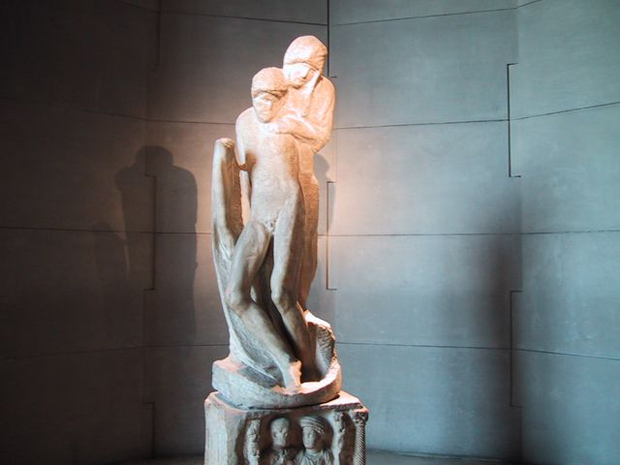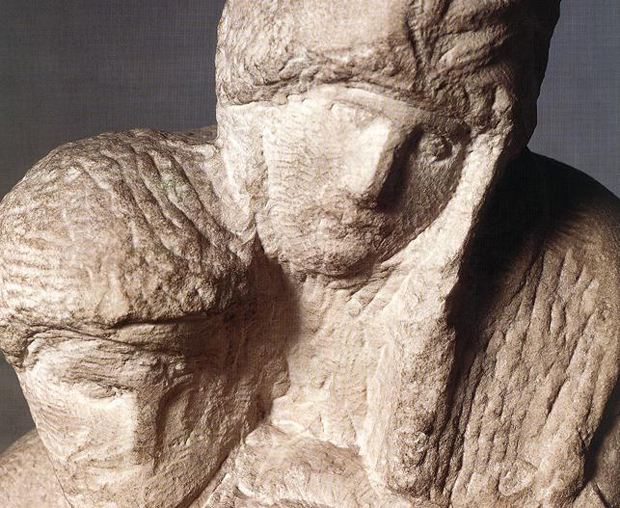
Michelangelo's final sculpture goes to jail
The Rondanini Pietà will be put on display at Milan's San Vittore prison while its permanent home is renovated
The Museum of Ancient Art, in the Sforza Castle in Milan, certainly appears to be a fitting location for Michelangelo's final sculpture. The foundations of this 14th century castle predate even the renaissance artist's ultimate works, and retain the kind of late Middle-Ages prowess befitting this marble rendering of Mary mourning over Christ's body.
However, the castle's facilities have proved a little too decrepit for so venerable a piece of Italian art, and, while Sforza undergoes renovation, The Rondanini Pietà (1564) will be moved to a new temporary location which, despite being just under a kilometre away, remains a world apart.
Later this year, the statue will be installed in Milan's San Vittore prison. City officials say that the artwork will be placed at the centre of the 19th century building which is based partly on a panopticon design, affording views from every wing.
Both press and art historians have objected to the proposed rehousing, citing the costs and the risks involved; the Italian news magazine Panorama suggested the statue would be better housed in a local square, with visitors charged a euro each to see it.

However, Stefano Boeri, Milan's culture commissioner, told Corriere Della Sera that the statue's brief spell in prison will cost very little, while raising questions of piety and faith, as well as the profile of La Pietà Rondanini, and of the plight of local prisoners (the 19th century jail is notoriously overcrowded, and last year the prison chaplain was arrested on sex abuse charges).
While we are surprised by the move, we applaud any decision to offer priceless art to an audience often regarded as below cultural contempt. Michelangelo's statue should go on display in the spring, though you won't have to commit a felony to see it. Boeri says there will be some measures put in place to maintain public access to The Rondanini Pietà during its prison term.
However, should you prefer not to enter an Italian jail to learn more about this Renaissance master, then please take a look at our classic Michelangelo books, which cover every aspect of his life and work.